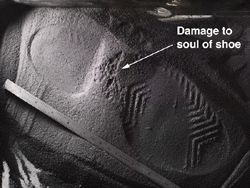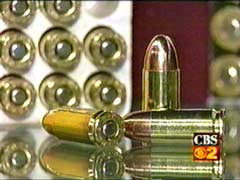


![]()
![]()
![]()
![]()
![]()
![]()
![]()
![]()
![]()
![]()
![]()
![]()
![]()
![]()
![]()
![]()
![]()
![]()
![]()
![]()
Firearms
The Ballistics Expert needs to verify the operating condition of the firearm. This is done by discharging the weapon into a water recovery tank. The bullet and/or cartridge from the crime scene are then compared with the bullet and cartridge fired from the weapon at the lab. Trigger Pull should be measured when checking the mechanical condition of a firearm. This can be measured by using a spring scale or adding weights to a pan scale hooked over the trigger. This is done with the firearm un-cocked.
The Ballistics Expert can also determine shooting distance by viewing the smoke halo and powder pattern of the burned, partially burned, and unburned particles blown from the muzzle of the gun when it was fired. Experts can replicate this by firing the firearm from specified distances at material. Other evidence can be found when examining firearms, such as gunpowder residue on the firearm, victim, or suspect and primer residue.
Tool Marks
Tool marks are considered to be any impression, cut, gouge, or abrasion caused by a tool coming into contact with another object. These marks are most often found at a burglary scene that involve forcible entry into a building or safe. These impressions can leave important class characteristics such as shape and size of the tool. When tools are manufactured they, like firearms are impressed with striations and they will display a series of microscopic irregularities having the appearance of ridges and valleys. A major problem with comparing tool marks is that it is very hard to duplicate the tool mark left at the crime scene.
Other Impressions
Other impressions include; shoe, tire, or fabric. When shoe or tire marks are impressed into soft earth at a crime scene, their preservation is best accomplished by photographs and casting. Class I dental stone is the recommended method for making cast of shoe and tire impressions. There are a number of other methods for retrieving these impressions, this is just one for example. Once the impression is in the lab the expert will compare the impression to the suspect, if there is one. They will look for irregularities, such as cuts, and gouges from wearing. They can also look at the designs of the shoe of tire and link it to a certain manufacturer, which can narrow down a suspect list considerably.






![]()
![]()
![]()